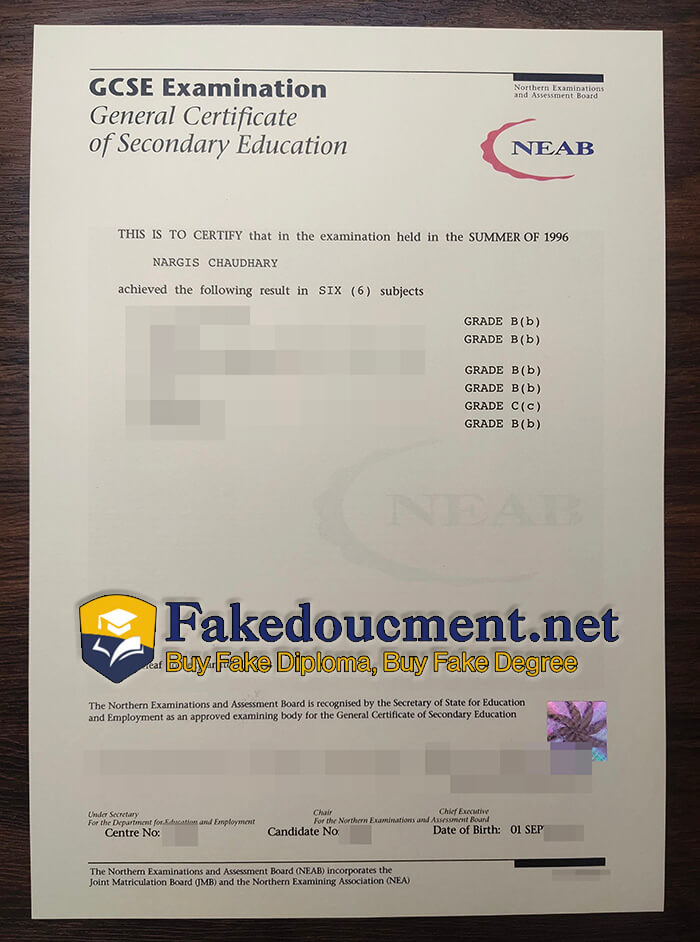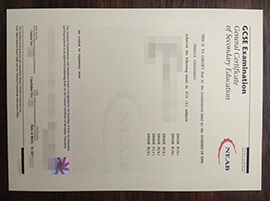
Where to order fake NEAB GCSE Examination General Certificate of Secondary Education online? I would like to buy a realistic NEAB GCSE Examination General Certificate of Secondary Education online. The NEAB GCSE Examination (Northern Examinations and Assessment Board General Certificate of Secondary Education) was a series of exams taken by students in the United Kingdom to assess their knowledge and skills in various subjects at the end of their secondary education.
The NEAB was one of several exam boards that administered GCSE exams, which were typically taken by students at the age of 16. The exams covered a wide range of subjects, including English, mathematics, science, history, geography, and languages. Students who passed their NEAB GCSE exams were awarded a certificate indicating their achievements, which could be used for further education or employment opportunities. The NEAB GCSE Examination was eventually replaced by the AQA exam board in 2000.
Before the introduction of GCSEs pupils took CSE (Certificate of Secondary Education) or the more academically challenging O-Level (General Certificate of Education (GCE) Ordinary Level) exams, or a combination of the two, in various subjects. The CSE broadly covered GCSE grades C-G or 4–1 and the O-Level covered grades A*-C or 9–4, but the two were independent qualifications, with different grading systems.
The separate qualifications were criticised for disadvantaging the bottom 42% of O-Level entrants, who failed to receive a qualification, and the highest-achieving CSE entrants, who had no opportunity to demonstrate higher ability.
In their later years O-Levels were graded on a scale from A to E, with a U (ungraded) below that. Before 1975 the grading scheme varied between examination boards, but typically there were pass grades of 1 to 6 and fail grades of 7 to 9. However the grades were not displayed on certificates.
The CSE was graded on a numerical scale from 1 to 5, with 1 being the highest and 5 the lowest passing grade. Below 5 there was a U (ungraded) grade. The highest grade, 1, was considered equivalent to an O-Level C grade or above, and achievement of this grade often indicated that the pupil could have taken an O-Level course in the subject to achieve a higher qualification. As the two were independent qualifications with separate syllabi, a separate course of study would have to be taken to convert a CSE to an O-Level in order to progress to A-Level.
There was a previous attempt to unite these two disparate qualifications in the 1980s, with a trial ‘16+‘ examination in some subjects, awarding both a CSE and an O-Level certificate, before the GCSE was introduced. The final O-level/CSE examinations were sat in 1987.






